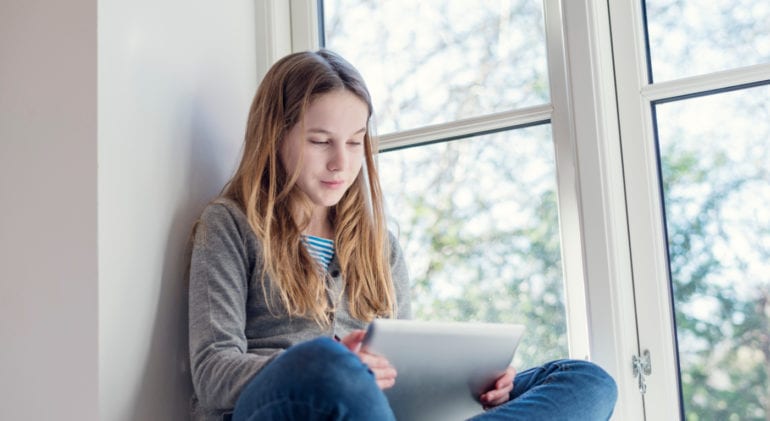Children with an Autism Spectrum Disorder diagnosis often benefit from Applied Behavior Analysis therapy. With the realities of COVID-19 and its subsequent social distancing measures, these in-person therapy practices may have been put on hold or pivoted online.
What is ABA therapy?
Applied Behavior Analysis (ABA) is a field of study used in therapy measures that builds a variety of daily skills, including verbal and non-verbal communication, hygiene practices, and play. Developing these skills specifically is a common goal many parents have for their children on the autism spectrum.
ABA therapy is a flexible practice that fits the specific and changing needs of each patient. Family-therapist teams can work to implement ABA practices in a variety of spheres, from in the home to at school.
ABA therapy can include one-on-one conversations and lessons, family discussions, or hands-on play and learning. Therapists work with patients and their families to build positive reinforcement around behavioral goals and reasoning skills.
Tele-ABA therapy practices
Traditionally, ABA therapy for children occurs in an office or group setting. However, online or tele-ABA programs have always existed, albeit at a smaller scale than what is needed today.
In the past, tele-ABA therapy provided ABA care to underserved communities. Tele-health options for ASD patients and families opens up care for those who live too far from support centers or cannot afford in-person treatment.
Today tele-ABA options are skyrocketing as children and families remain at home.
We’ve compiled some virtual ABA therapy options for families and young children living with autism or other developmental differences.
6 online Applied Behavior Analysis therapy activities for children at home
1. Utilize free online learning
Many educational resources that previously had paywalls or limited access have now opened for all in the wake of COVID-19. Work to continue education and at-home therapy practices with your kids by taking advantage of free online videos and courses.
Autism Spectrum Therapies recommends adapting existing programs to a child’s pace and personalizing them to reinforce ABA practices. For example, the kids’ section of National Geographic’s site offers downloadable worksheets for every age, fun animal webcams, science experiments, and more.
2. Join an ABA discussion group
In the age of Zoom meetings, ABA therapy can also embrace the landscape of virtual learning and communication platforms by organizing larger live discussion groups.
These can include a variety of patients and therapists or expand to include family members. These sessions could act as a specialized play group and help in socializing younger kids who have faced a lack of new social interactions with COVID-19 restrictions.
3. Continue 1:1 therapy remotely
If your child had been participating in individualized ABA therapy prior to COVID-19 restrictions, it may be difficult to pause things and face the possibility of lost progress. However, depending on your care provider, this does not always need to be the case.
In order to continue the high level of care and individual attention you and your child had previously received, speak with your therapist or care office about virtual options. Routine and familiarity can be beneficial for those with ASD diagnoses, so if possible, try to continue seeing a therapist’s face and reinforcing those prior skills and building blocks.
4. Take a virtual adventure
Many zoos and museums are now offering immersive experiences and walk-throughs in an online setting. A fun and engaging remote ABA activity could include a trip to your local zoo on the computer. According to Autism Spectrum Therapies, “discussion and play can be developed around the identities of the animals, the sounds they make and what the child can see them doing.”
Explore the Smithsonian’s Panda Cam or take a trip to Monterey Bay and see its sea otters. For the less animal-inclined, a virtual tour of a Greek museum could prompt great discussion and engagement.
5. Text-ABA
For older children and teens with an ASD diagnosis, texting may quickly become the main or common mode of communication with peers and family. Therefore, this can become another form of social development.
If your specific provider’s technological and legal capabilities allow for texting therapy practices, this could be a great option for older children. Through texting, various communication lessons can come to the forefront.
6. Tactile art projects
While this activity requires some physical preparation on the part of the family, it’s an incredible remote project that helps develop sensory play (and have some fun)! ABA therapy often integrates some form of art or touch-play to encourage motor skills and overcome tactical defensiveness.
If you’re not confident in leading your own art project at home, try exploring free online resources or follow along with a video.
The Chicago School’s Applied Behavior Analysis programs equip graduates with an array of effective treatment methods to help children and adults with autism and other developmental disabilities improve their social, motor, verbal, and reasoning skills. Learn more about our programs.

